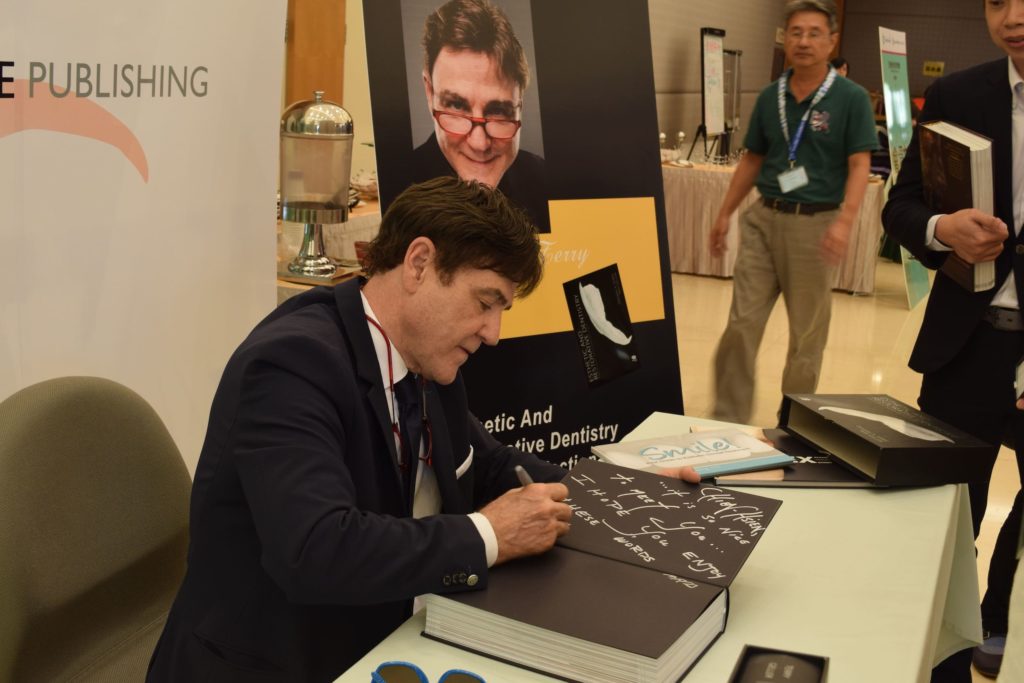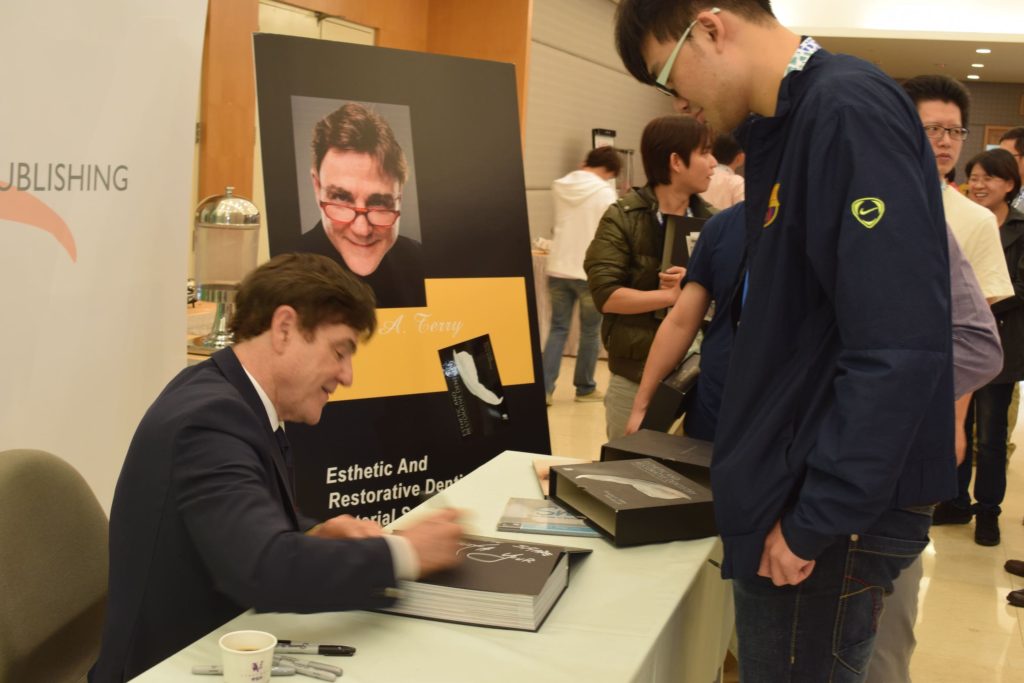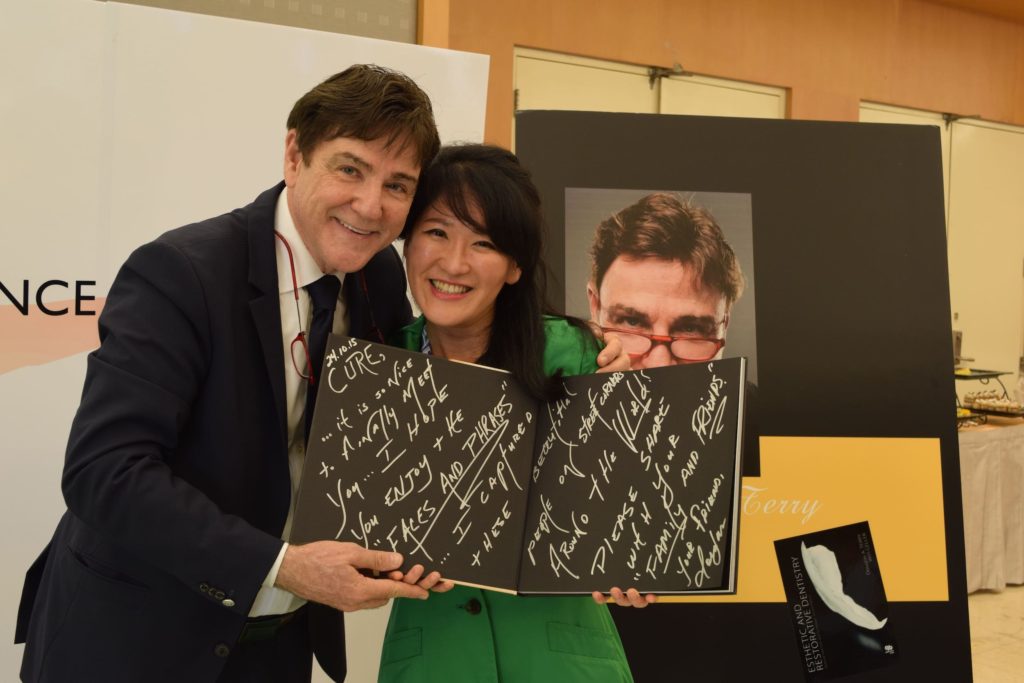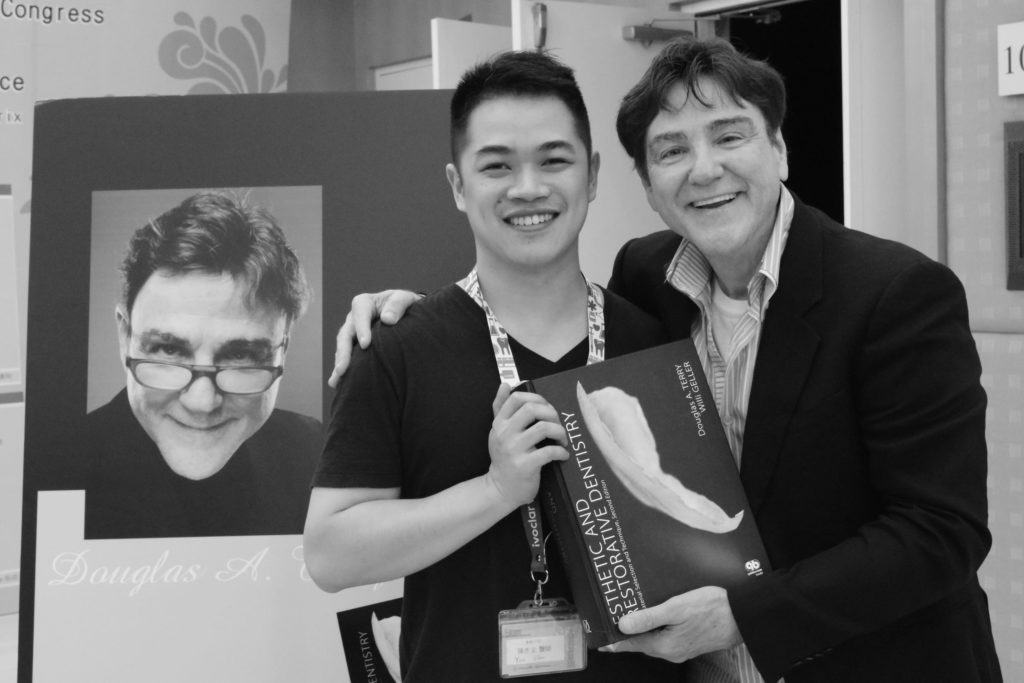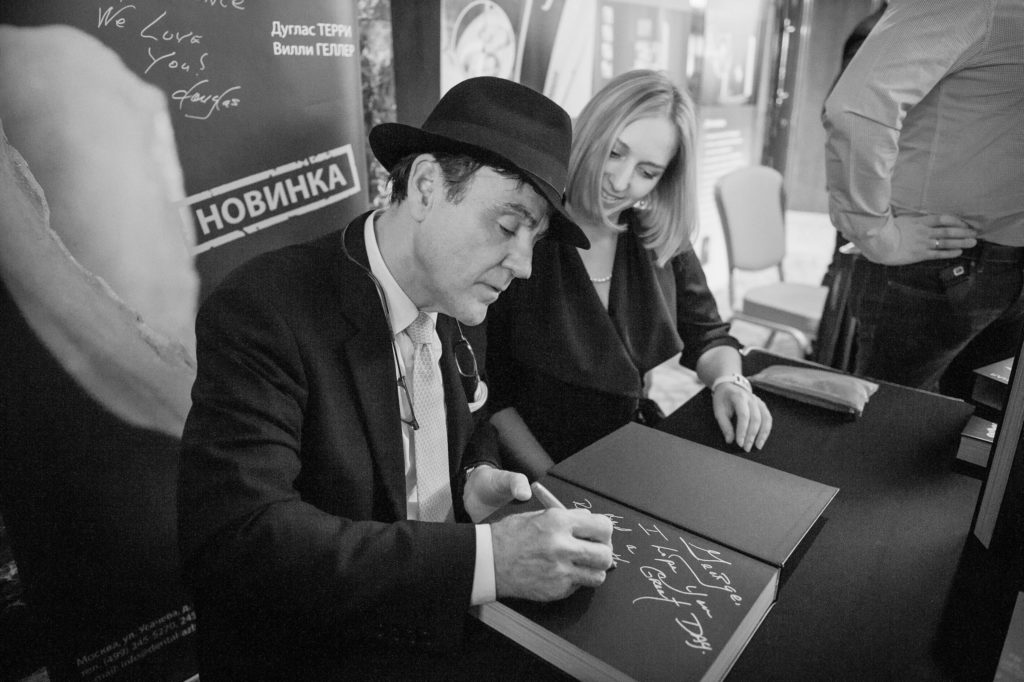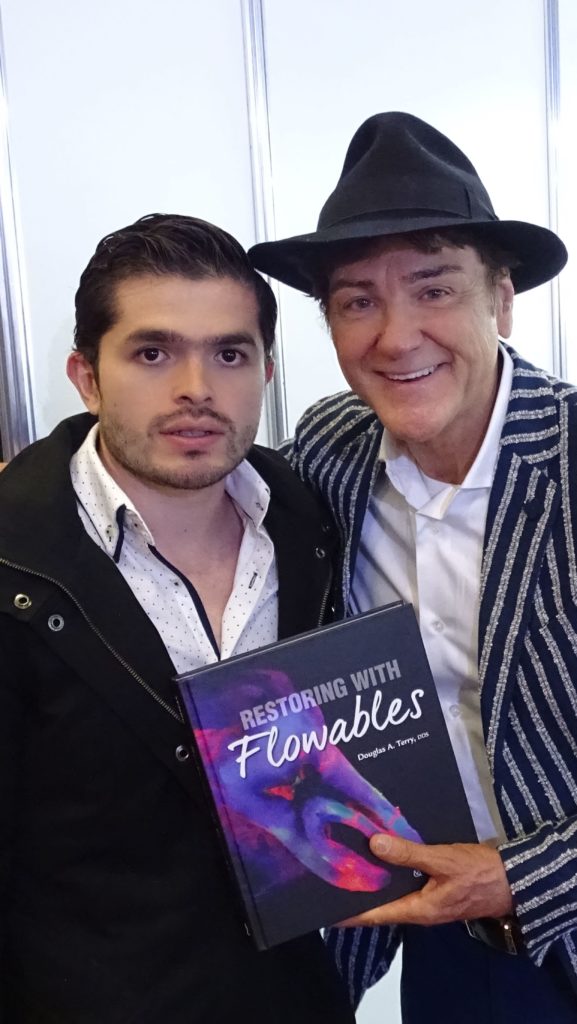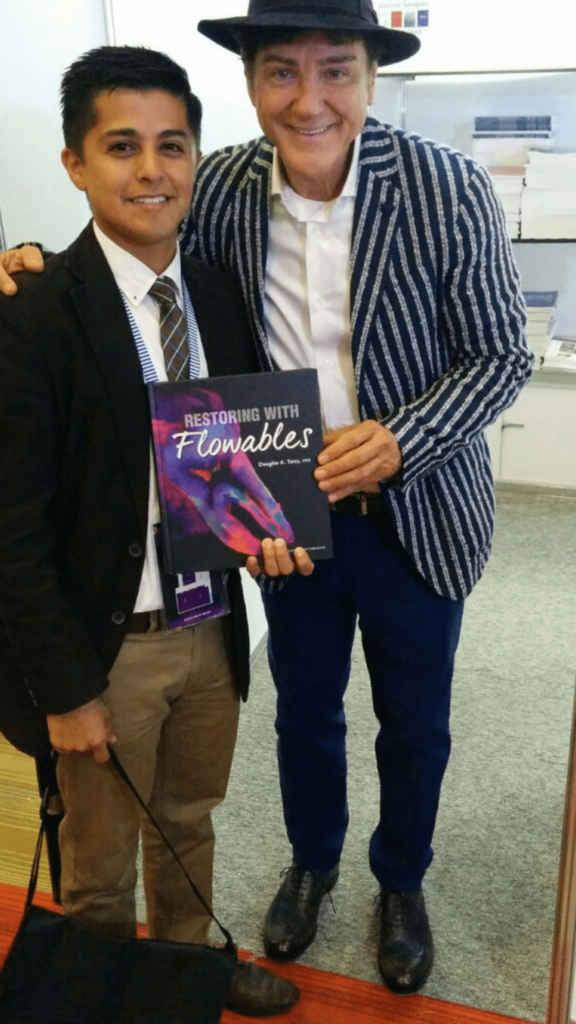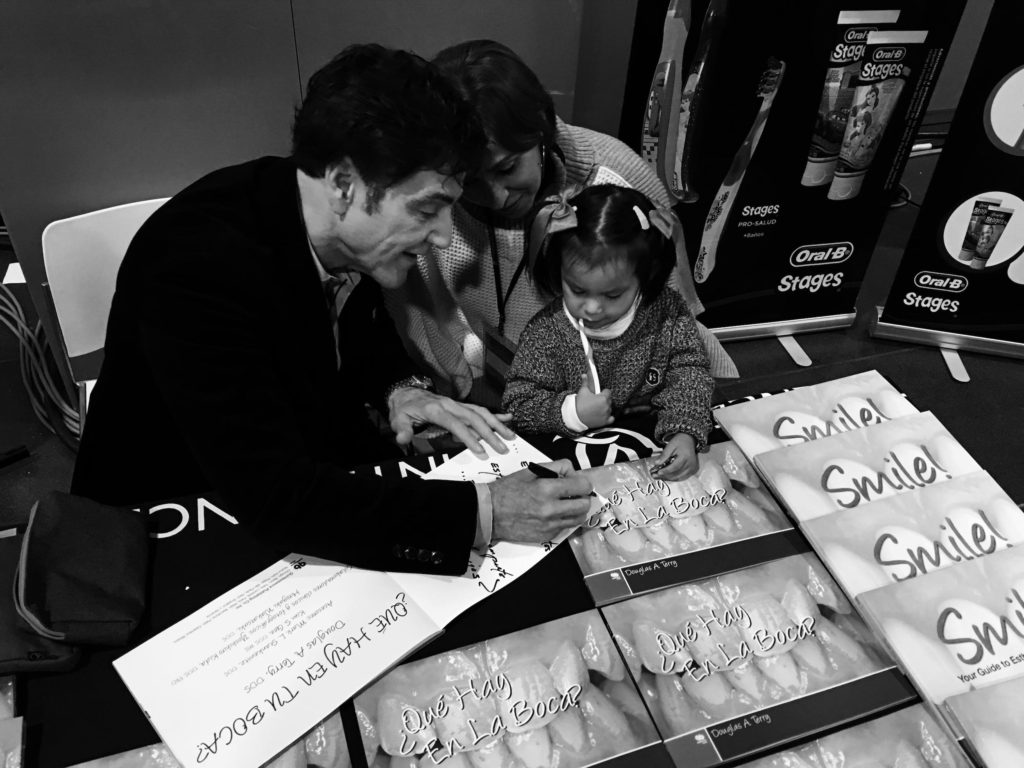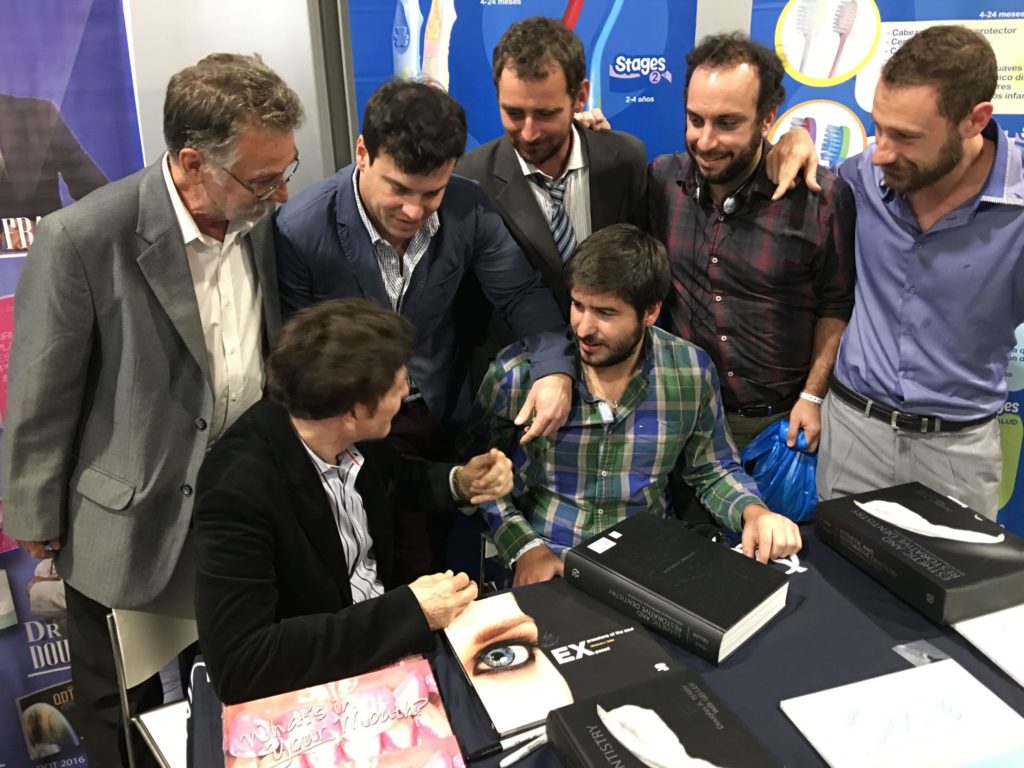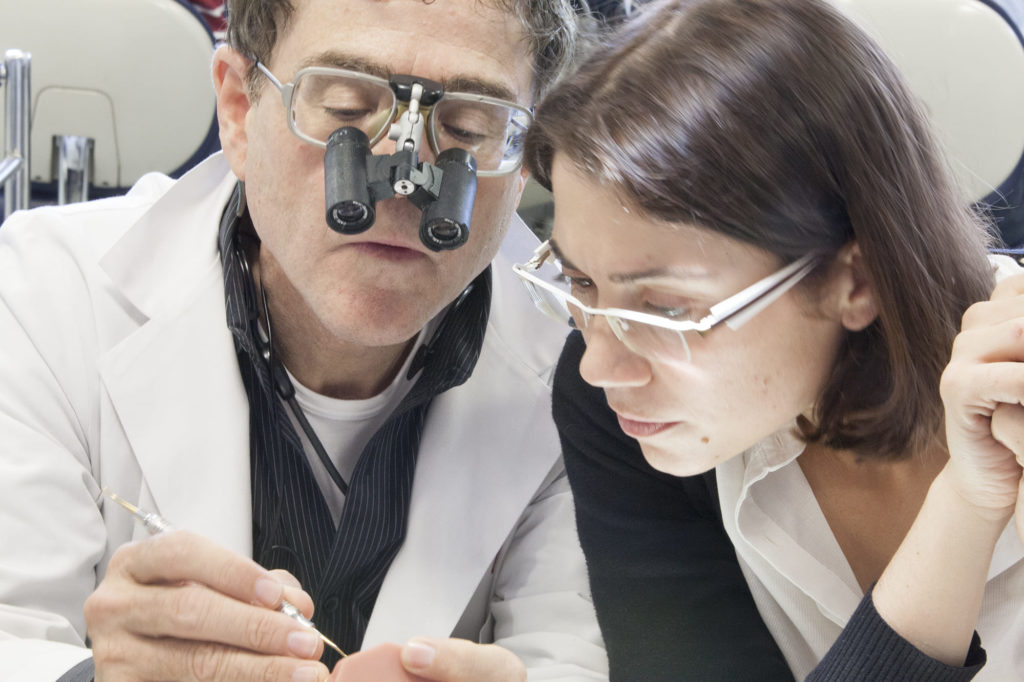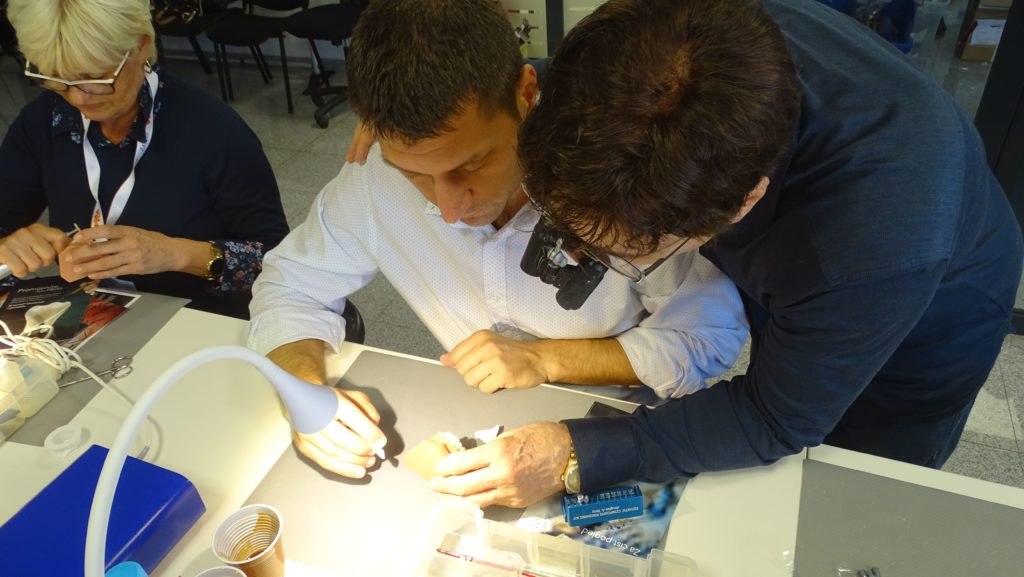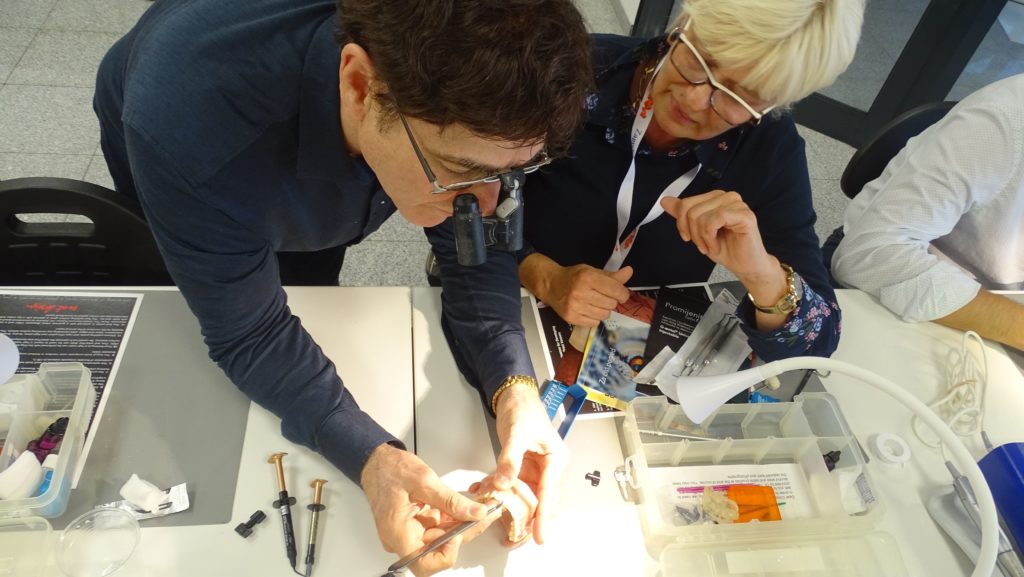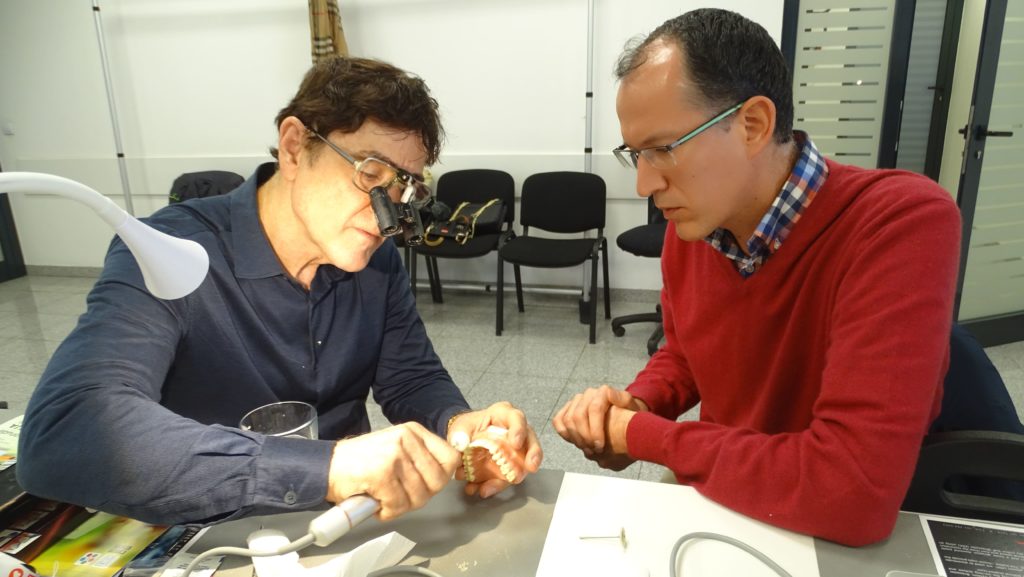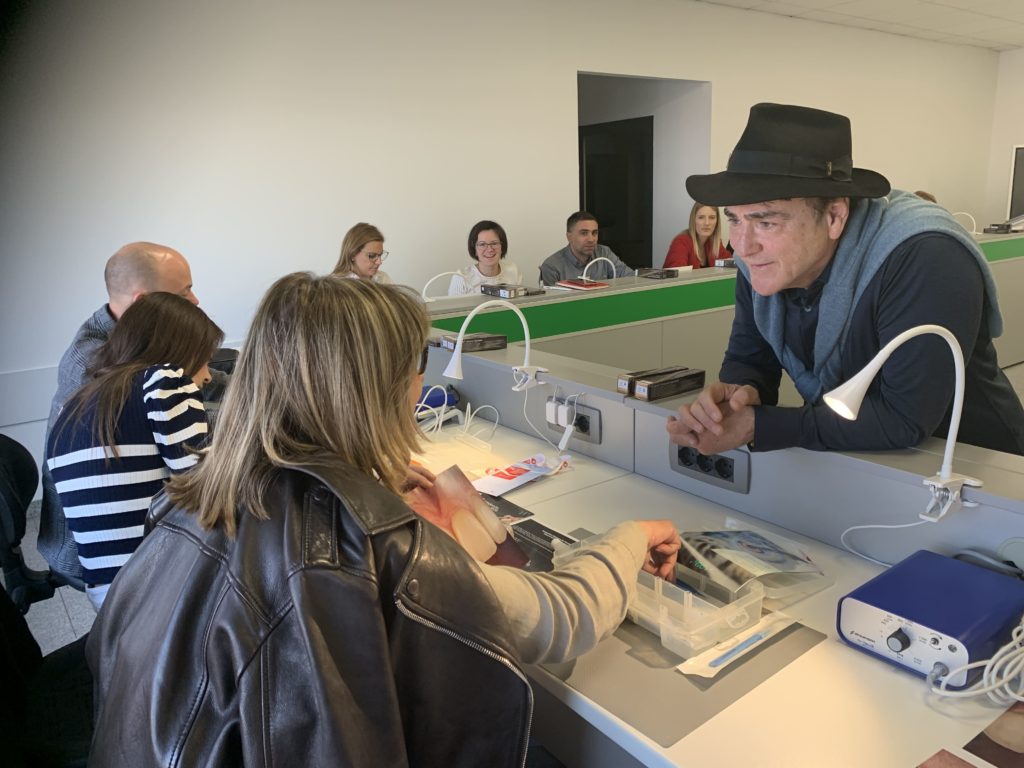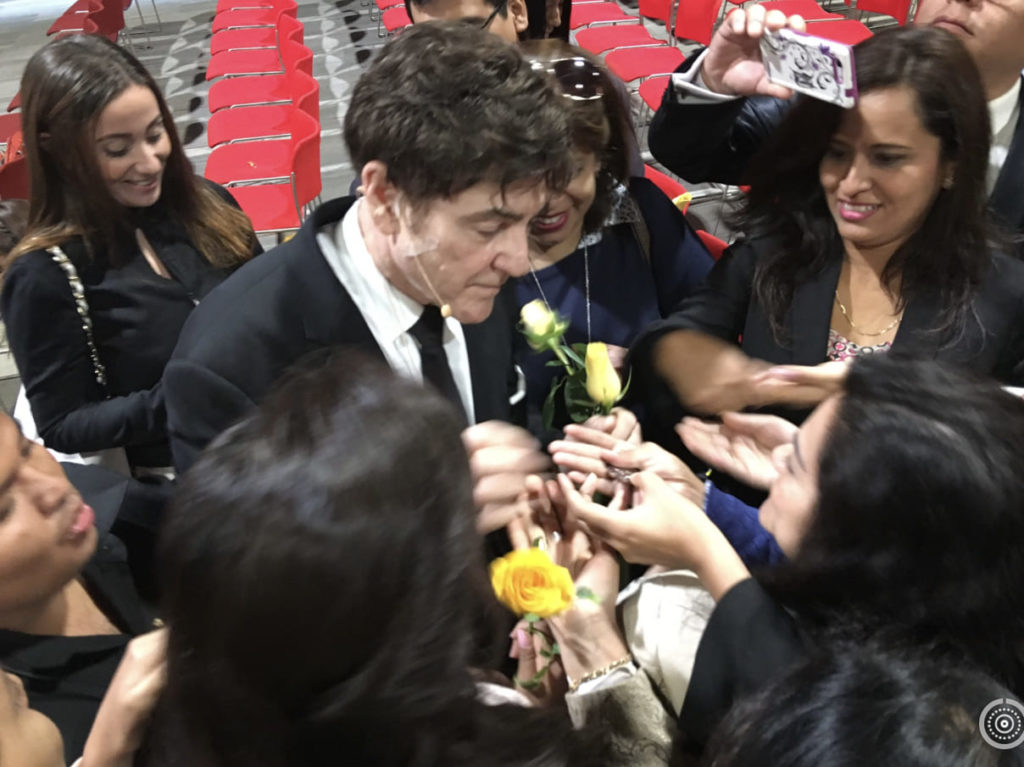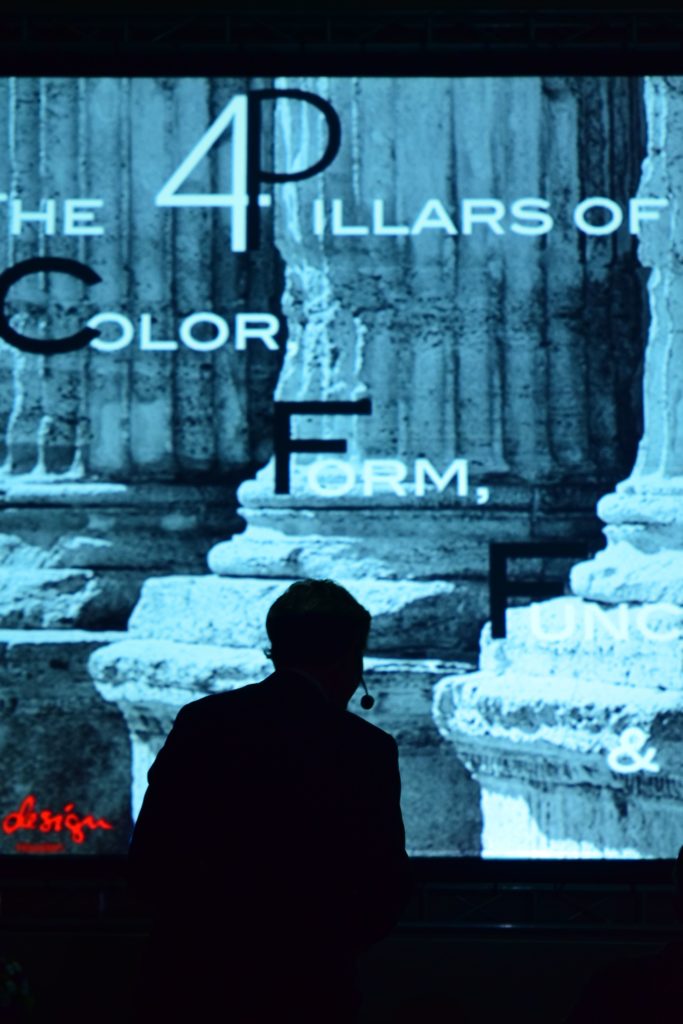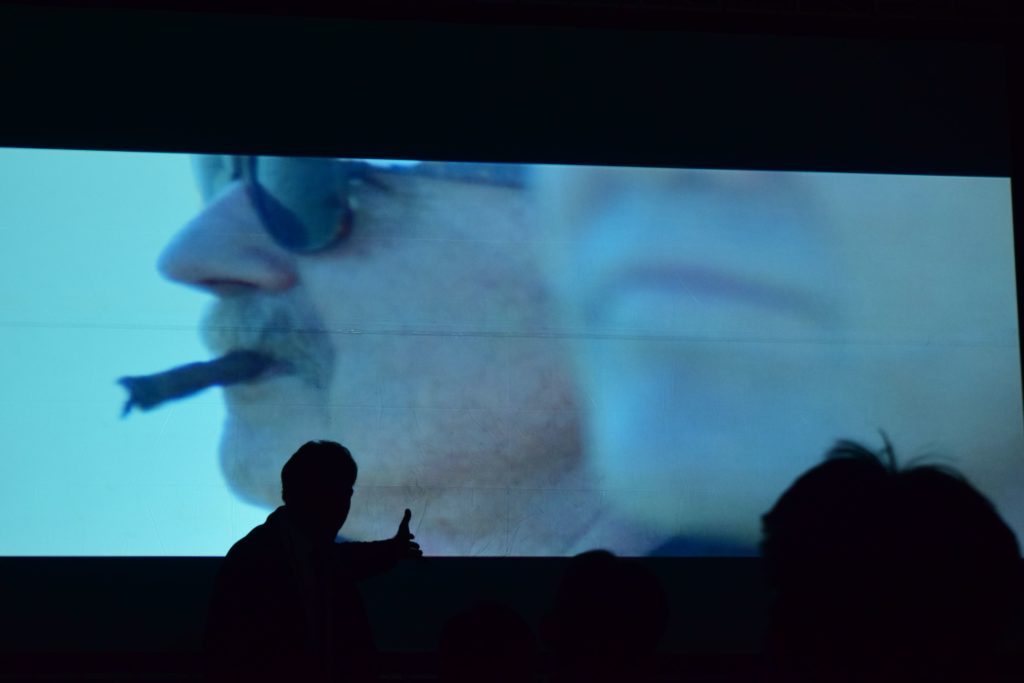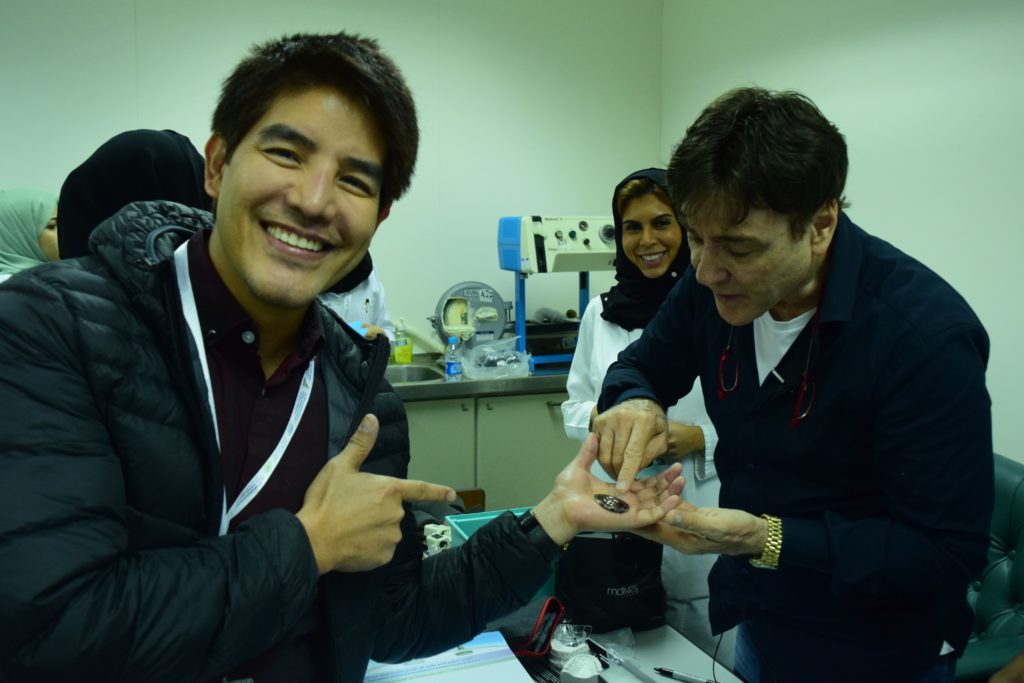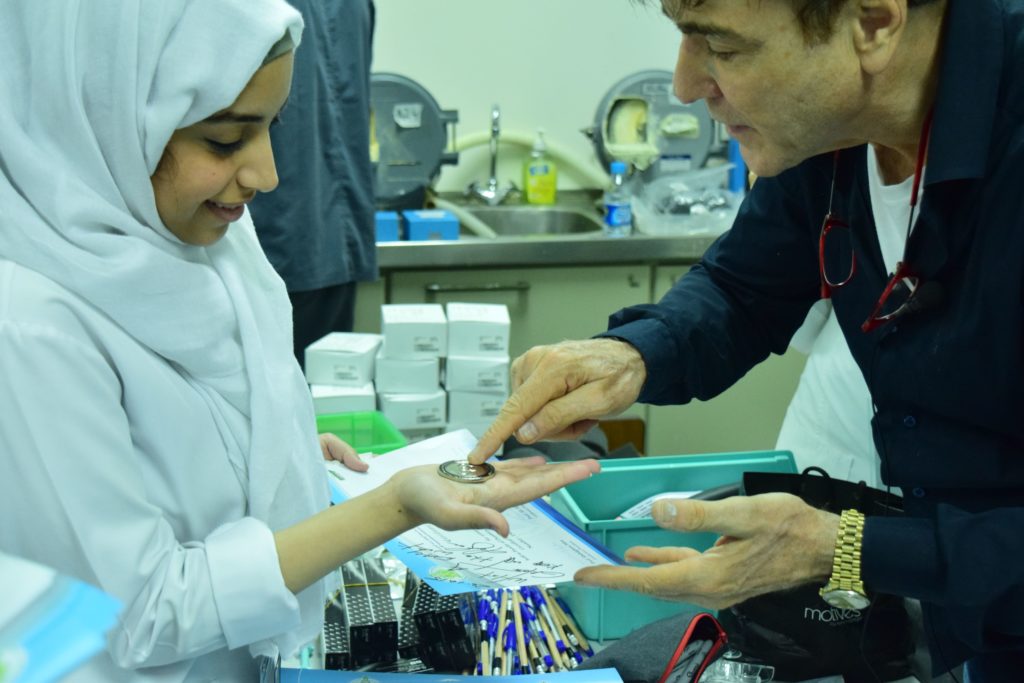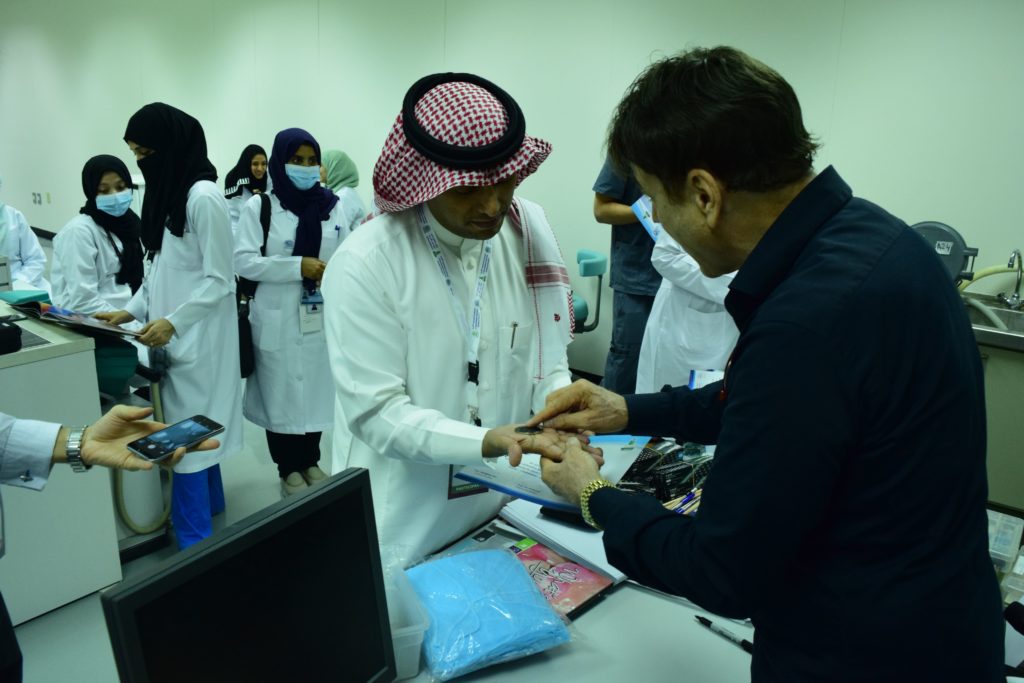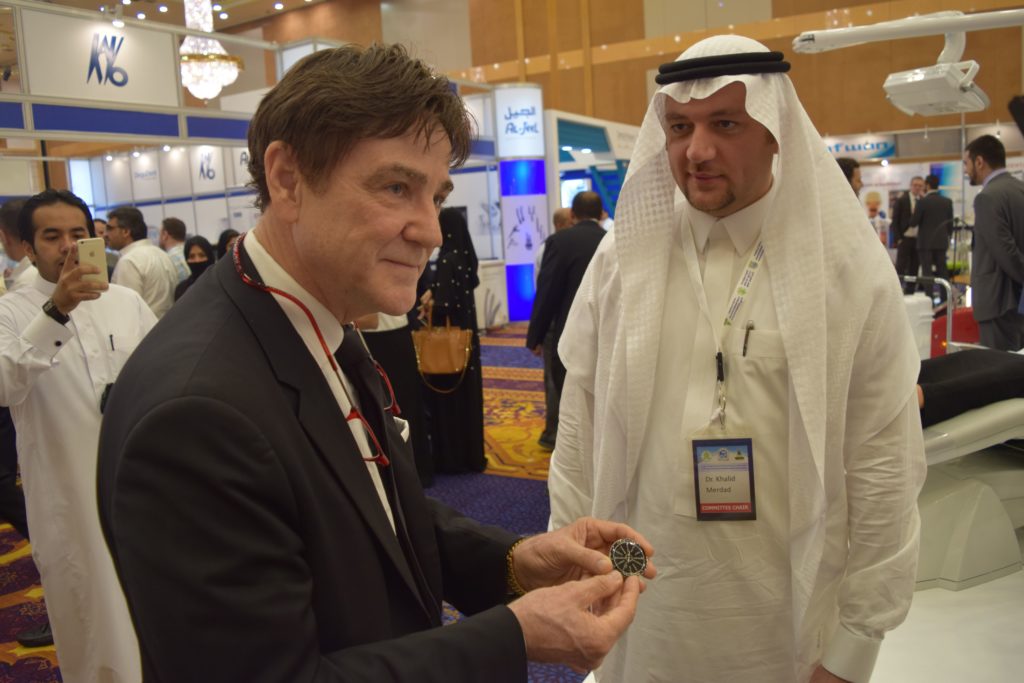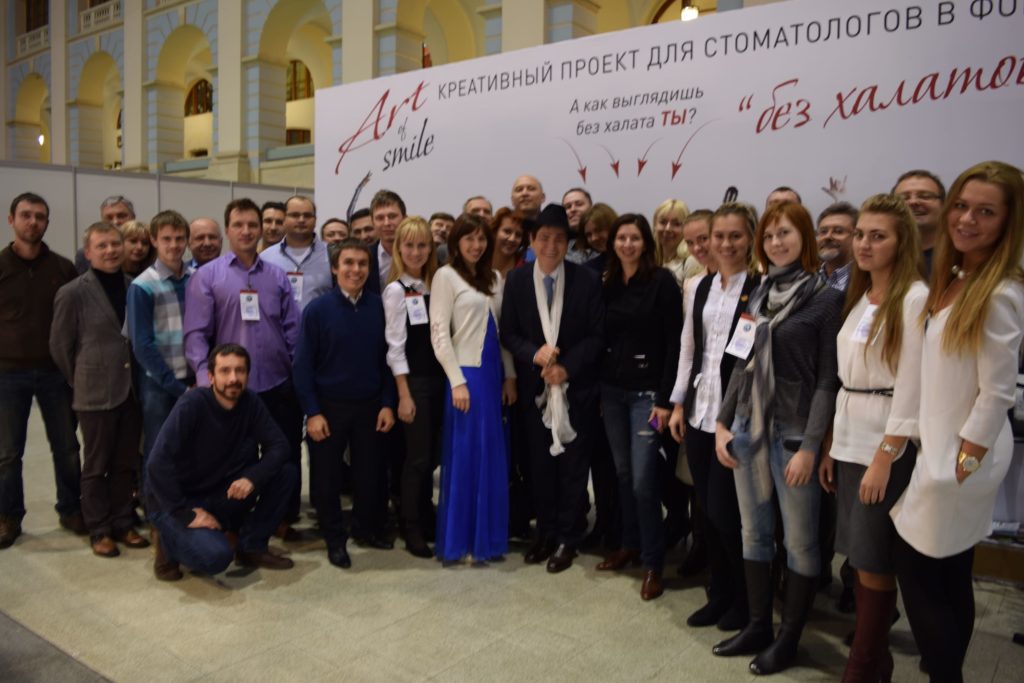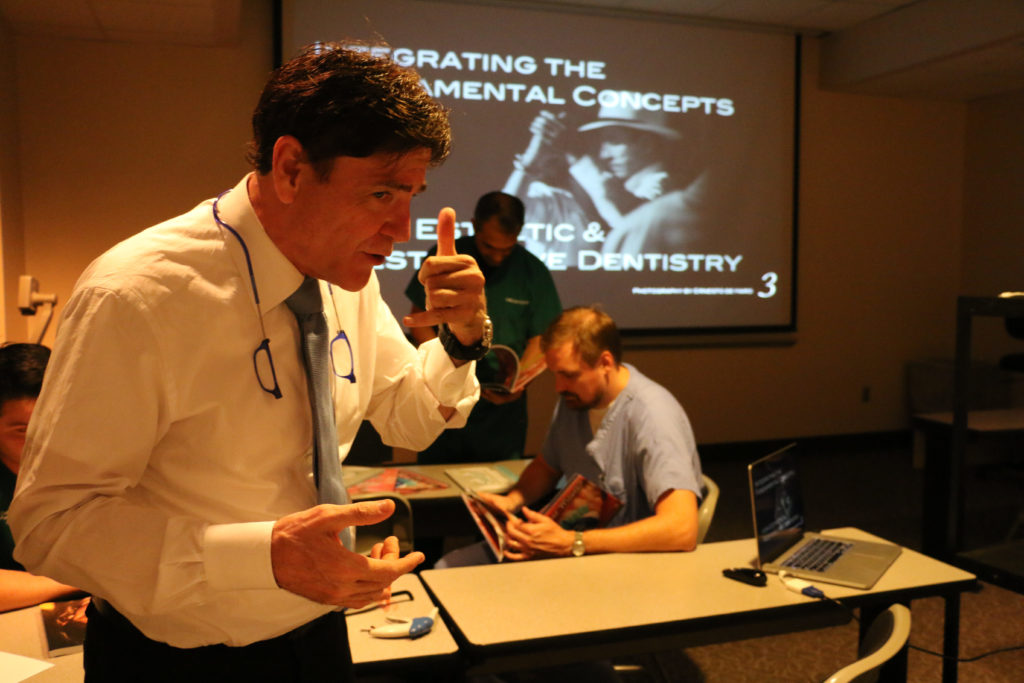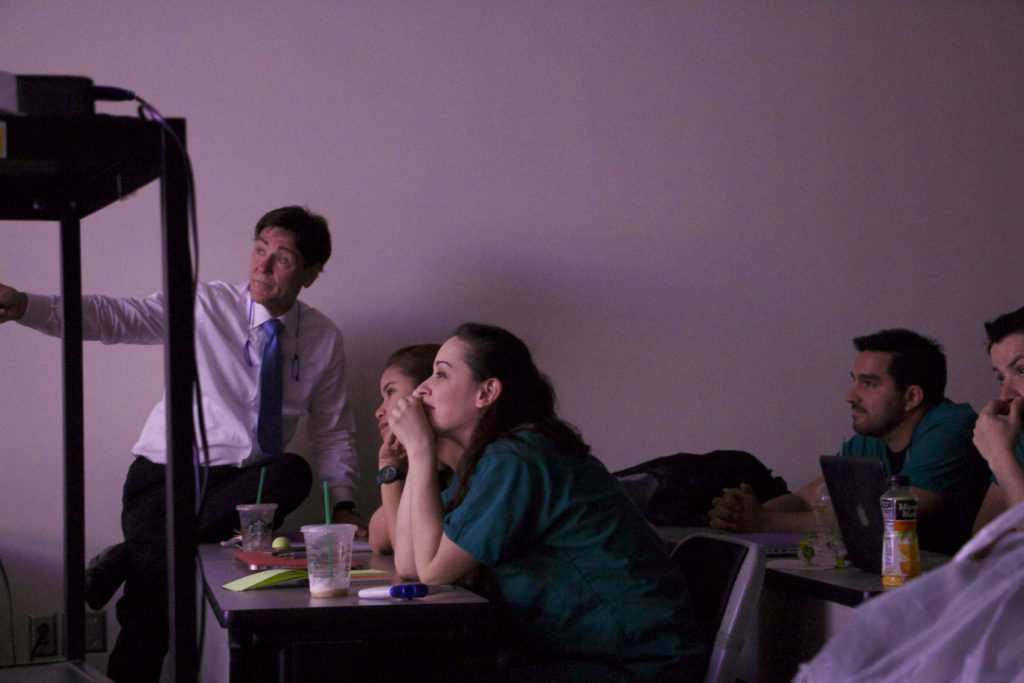Dr. Douglas A. Terry
Few names in modern esthetic dentistry are as recognizable or as influential as that of Douglas A. Terry, DDS. He is a sought-after lecturer around the world, his books are bestsellers that have been translated into multiple languages, and his patients travel to his clinic in Houston, Texas, from all over.
Despite his acclaim, Dr Terry maintains a unique approachability and a true desire to meet and interact with everyone his work touches. Everyone who has met Dr Terry has walked away with a memorable story; everyone who has worked with him has seen the imprint his passion and perfectionism leaves behind on their personal work.
“I decided I wanted to be a dentist when I was 9 years old … I liked working with my hands, I enjoyed science, and I was artistic. I also wanted to help people, and based on my visits with our general dentist Dr Thomas Weatherly I thought dentistry was a perfect match for me. Later on as a dental student, I even waxed and cast crowns for Dr Weatherly.”
Dr Douglas A. Terry
The world is full of people who wanted to be astronauts when they were kids but grew up to be something different. It’s fairly unusual to find someone who grew up to do exactly what they wanted to do when they were young—it’s even more unusual to find someone who wanted to grow up to be a dentist. But that’s exactly what happened with Dr Terry.
Dr Terry attended dental school at the University of Texas Health Science Center (UTHSC) Dental Branch at Houston. It was there that he first began to hone his interest in esthetic and restorative dentistry. “During my school years,” he says, “I was able to work with Dr Frank Faunce, who helped develop the Mastique veneer, and from that point on everything was esthetic. The restorative concepts were slowly changing to adhesive dentistry, and Drs Kenneth Porter, James T. Miller, and John Chandler were great mentors. They taught me the significance of detail in any restorative procedure.”
Dr Terry recalls his first restoration:
“I always ask my colleagues if they remember the first restoration they did in dental school. Mine was a Class I restoration on a mandibular left second premolar. I had stayed up all night reviewing G. V. Black’s principles. I had the dental dam on and had prepared the cavity, and then my teacher came over, flipped his loupes down, and said, ‘Douglas, come out into the hall.’ He said, ‘You are not into the dentin—go deeper.’ So I did and I called him back. He took a look at my preparation and said, ‘Douglas, come out into the hall. You must extend the cavity preparation into the grooves.’ So I did. He came back and finally said, ‘Now you can apply copalite and place your amalgam.’ And that was my first restoration.
But several years ago, that teacher ended up in the second row at one of my presentations. And I told him, ‘Today, we could have stopped in the dentin and had a more conservative, reinforced, beautiful restoration.’ And he said, ‘Now you are my teacher!’”

After graduation in 1978, Dr Terry continued to pursue new knowledge and build connections with others who had the same goal—to lift esthetic and restorative dentistry to new heights.
The inspiration for the first edition of Esthetic and Restorative Dentistry: Material Selection and Technique came from a desire among Dr Terry and his colleagues, both dentists and technicians, for a definitive resource that showed not just what to use and when, but also how. At the suggestion of Willi Geller, MDT, in 2002 Dr Terry organized a group of interdisciplinary colleagues from around the world and called the group design Technique International (dTI). The motivation behind this group, which included master technicians, clinicians, and biomaterial scientists, was that an international editorial team from different educational and clinical backgrounds would provide the best source for solutions to the questions Dr Terry wanted to answer in his book. Over the next 5 years, the book slowly took shape.
The first edition of Esthetic and Restorative Dentistry was published in 2009, William Hartman, Executive Vice President and Director of Quintessence Publishing USA, recalls. “When Christian Haase, our Managing Director, met Douglas at a dental conference, he was already well known internationally and had published the first edition of the book. He had self-published and was learning, like many authors do, that marketing and selling books—especially a single title—is quite costly. We were impressed with the quality of the publication and decided that we would take the book on and distribute it if he promised to do the second edition with Quintessence. After the first edition sold out, he completed the second edition with us, and Douglas officially became a Quintessence author.“
-

- The first edition of Aesthetic & Restrorative Dentistry
-

- The second edition and the first of many books Dr. Terry has done with Quintessence
The second edition of Esthetic and Restroative Dentistry , published by Quintessence in 2013, also sold out. Dr Terry has written a total of six books with Quintessence, which have been translated into multiple languages and distributed internationally. “Like many Quintessence authors,” Mr Hartman says, “Douglas is part of a distinguished group around the world who influence the industries of restorative dentistry and prosthodontics. His books play an important role in that. Today, not many dental texts can boast that they’re in their second edition, let alone their third, and that both previous editions have sold out.”
“Working with Dr Terry is certainly unique,” his editor, Leah Huffman of Quintessence, says. “He likes to be as involved as possible and is always willing to hop on a plane to make sure we can go over everything in person. He never wants to miss anything or leave anyone out, so he will painstakingly go over the entire book multiple times. Dr Terry is also the best ambassador for his books that I’ve ever worked with. His passion for his craft and for educating future generations is obvious to anyone who has a conversation with him, and he connects with people on a personal level at every opportunity.”
These personal connections aren’t just a facade to sell books and do business, though. For Dr Terry, personal connections are what motivate him to succeed, whether it’s connecting with students during a lecture or connecting with patients in his clinic. In everything he does, Dr Terry’s work is driven by a genuine desire to serve and a devotion to his patients.
Dr Susana Paoloski, a periodontist who often collaborates with Dr Terry on cases and who has been on the editorial board of “Esthetic and Restorative Dentistry” since its first edition, describes Dr Terry’s unique approach to interdisciplinary care:
“Working with Douglas on a case is an inspiring intellectual pursuit,” she says. “The patient’s needs and expectations are the starting point. He insists on bringing the patient to meet the team in person if feasible, and if not he presents photographs revealing the personal characteristics and traits of the patient—who they are, what motivates them. The individual patient is always at the center. Douglas understands the concept of a team: where the collective decisions and opinions are much more than the individual contributions. It is an intense process with all the movable parts blending to form a diagnosis and treatment plan. We start with the desirable outcome for the patient, and together we develop the steps to reach it.”

Drs Terry and Paoloski frequently collaborate on cases
But even outside the clinic, patient care remains the central motivation for Dr Terry.
“Douglas is committed to dentistry as a science-based profession that improves peoples’ lives,” Dr Paoloski continues. “He is moved by curiosity and the constant pursuit of excellence. His challenge is to develop materials and techniques to enhance results, benefitting both patients and practitioners. In his mind, there is always a better way to do it or teach it, and he never gives up before he finds his answer.”
“He cannot tolerate poor dentistry for patients,” John O. Burgess, DDS, MS, states. “He desires that everyone receive the finest care possible. Over the years that I have known him, I have realized that he is one of the most dedicated and passionate dentists I have ever met. I mean, all the leaders are passionate and partially mad about dentistry—but Dr Terry is extreme. Once you realize this, you start to really understand him and his drive to learn more and do better and better. He is confident and not afraid to try new concepts, materials, and techniques to see how they perform, and as such he is constantly leading the field. For example, his very successful Flowable Composite Resin Restorations and his advancement of all-ceramic restorations place him at the top of leading esthetic dentists.”
“Douglas has profoundly impacted the teaching and practice of dentistry,” Dr Paoloski says. “He asks fellow dentists to take a leap: to question the orthodoxy, to expand their thinking, to defy the status quo. He is an advocate for excellence—both individually and collectively. He inspires other dentists to feel excited to be a health professional at this time in our history. Douglas is an artist who happens to be a dentist.”
An extension of Dr Terry’s patient-centered treatment is that the patient must be part of the restorative team. Dr Terry explains: “One of my patients of many years, Stephan, taught me the importance of making the patient the team captain for improved oral health. To ensure a lifelong smile, the patient must adopt the oral health philosophy of the dental team. It’s important to visually explain and inform patients, whether children or adults. Most clinicians use visual learning to guide their patients, which is why these books are so widely used. The book Smile! Your Guide to Esthetic Dental Treatment is an evolution of our philosophy in that it helps enable informed consent from the patient for many restorative and esthetic procedures. With proper informed consent, the patient can make educated choices for their dental care.”
This idea that the patient must be part of the restorative solution creeps into all of Dr Terry’s work and most of his conversations on restorative dentistry. It is also evident in the texts he has written specifically for patients. His book What’s in Your Mouth?, Your Guide to a Lifelong Smile guides adult patients on proper brushing and flossing techniques and educates them on potential consequences of subpar oral care. What’s in Your Mouth? What’s in Your Child’s Mouth? accomplishes the same goal, but for pediatric patients and their parents. Both books center on the patient as the main catalyst for improved oral health.

By becoming part of the restorative team, Dr Terry’s patients are able to accept their share of the responsibility for the success of each restorative procedure. Madison Willis, a 12-year-old patient from Houston, Texas, describes how Dr Terry convinced her to do her share of the work. “He told me that brushing my teeth is like making the right moves to win a game of checkers—you have to make the right moves to keep your teeth healthy, so he showed me how to brush my teeth in circle motions to get all the bugs (plaque) off my teeth.”
“Dr Terry explains and educates patients about the reason that led to the issue, the process and steps that need to be taken to resolve it, and the patient’s role in the process,” Andrey Verloka, a patient from Houston, Texas, emphasizes. “The treatments he offers are aimed to reach the highest level and to improve not only the esthetic look but also the long-term oral health. He is very detailed—he doesn’t rush while preparing the tooth. He tries to preserve teeth by applying conservative approaches and then watches the progress to determine if further and more aggressive forms of treatment are needed.”
Mr Verloka and Dr Terry share a special bond after the past year. While they had already developed a friendship thanks in part to Dr Terry’s patient-centered approach to treatment, on August 25, 2017, Mr Verloka went above and beyond to help his dentist during a time of need.
Dr Terry explains: “I was in Denver, Colorado, when Hurricane Harvey hit and Houston started flooding. At 11:45 pm I received a call from my mother—the water was rising in her house and covering her feet. I immediately called the chief of the fire department in her area, and he rescued her from the rising water in her home. The next morning I called Andrey. He picked up my mother, my assistant Melissa Nix, and my two babies (Boston terriers, Sir James and Bellamina) and drove them to his home 75 miles away. He placed his own life in danger to protect what was dear to me while I was grounded in Denver. Later, after I was finally able to get a flight to Austin, Texas, he drove 300 miles to pick me up from the airport. Our relationship began first as dentist and patient while he was still in Russia; now, I consider his friendship truly a God-sent blessing.”

From left to right: Andrey Verloka; Chuck Tylka, Fire Chief of the Southeast Volunteer Fire Department of Houston, Texas; Sue Terry; and Douglas A. Terry.
If you’ve ever met Dr Terry, you probably walked away with his calling card—The Moral Compass, a customized coin on which he has had several guiding principles inscribed. The directions include humility, empathy, respect, and self-discipline. Most importantly, the compass’s north is represented by Truth. The back of the compass reads, “The search for knowledge and wisdom can lead to the discovery of truth.” Just as Dr Terry directs others to use the compass for guidance in their lives, he also relies on these principles in his own life.
“It all began 14 years ago,” Dr Terry says, “when I tried to help several patients who had been mistreated.”

What he had stumbled upon was a web of Medicaid fraud, where dentists were overtreating child patients for big payouts. Further, in his pursuit of justice for these patients he discovered one large obstacle: members of the Texas State Dental Board of Examiners regularly appeared as expert witnesses for the defense at the malpractice trials of clinicians accused of violating the policies the Board was charged with enforcing. To achieve justice for his patients, Dr Terry would have to go against the governing board for his profession and possibly put his career on the line. He joined the group Texans for Dental Reform and successfully lobbied to have the Board rules changed.
“It is far easier to stay on the sideline and not get involved,” Drew Clawson, one of Dr Terry’s patients, says, “but Dr Terry is a strong proponent of changing the way the profession handles unethical work practices that are detrimental to patients. Instead of backing down, he became an activist in dental professional ethics monitoring and reporting and how those poor practices are handled by those with jurisdiction.”
“In our state, dentistry has become a vehicle to become rich at the expense of patients who are harmed,” patient Lucille Zalud says, “but Dr Terry has put his time and money into helping the people of Texas receive dental care according to the standard of practice that governs all dentists. His relentless pursuit of the State Board of Dentists has cost him more than anyone knows. Dr Terry is the best example I know of a man fighting for a cause no matter the cost.”
But the fight didn’t come without backlash. “My life was turned upside down,” Dr Terry recalls, “but God gave me the courage and knowledge to endure the bad behavior of many professionals. I learned many things during that time, but one thing stands out: there are pigs and there are principles. I had never before experienced the pigs in our profession and how they want to cover up the truth. From this tumultuous time, new laws were made and Medicaid fraud and the overtreatment of children was exposed. The principles prevailed, but the pigs still remain.
“The coin that you see in all of my books is a symbol of this traumatic time in my life. On my compass, truth is north. Truth can be different for each of us based on our experiences, culture, and religion, but each of the values on the coin are values we should have for each other.”

Many of Dr Terry’s innovations have been to make esthetic and restorative dentistry accessible to more patients. For example, his recent book Restoring with Flowables champions flowable composite resins as a material that can be used to provide economically feasible and technically viable solutions to a variety of esthetic and restorative problems. When asked why it is important to innovate on both ends of the financial spectrum, he says, “Esthetic dentistry should be accessible to everyone,” then provides the following quote:
A smile costs nothing, but gives much. It enriches those who receive, without making poorer those who give. It takes but a moment, but the memory of it sometimes lasts forever. None is so rich or mighty that he can get along without it, and none is so poor but that he can be made rich by it. A smile creates happiness in the home, fosters good will in business, and is the countersign of friendship. It brings rest to the weary, cheer to the discouraged, and sunshine to the sad, and is nature’s best antidote for trouble. Yet it cannot be bought, begged, borrowed, or stolen, for it is something that is of no value to anyone until it is given away. Some people are too tired to give you a smile. Give them one of yours, as none needs a smile so much as he who has no more to give.
Based on the writings of Rabbi Samson Raphael Hirsch
In the second edition of Esthetic and Restorative Dentistry, the opening spread of chapter 10 features a special oil painting done by one of Dr Terry’s mentors at UTHSC, James T. Miller, DDS.

“Dr Miller was my teacher, my friend, and a second father to me,” Dr Terry says. “He was an artist and a dentist who painted. One time I asked him to paint me a picture of a clown, and in response he painted me as a clown in the dental mirror back when I was his student and asking him an endless stream of questions about everything. Later in his life, I commissioned him to go around Texas and paint churches. He made five paintings for me, which I have hanging in my office. One of them is of a little church in the middle of downtown Houston. It was sandwiched between all of these modern skyscrapers, and he had painted the reflection of the church in complete detail, just as it appeared on the huge glass skyscraper next to it. That painting taught me that we should look closer at the important things our friends and family are trying to share with us and not wait until they are gone. At the end of his life, he called and asked me to come to his home, where he told me he had liver cancer and only months to live. In the corner of his office, he had a painting wrapped up, and he said it was for me. It was this beautiful painting of a clown that I had always admired. And now I’m able to share the stories of what he taught me whenever I share that chapter with my colleagues or when patients ask about the paintings in my office, and I can share with them this beautiful smiling clown.”
-

- The painting Dr Miller gave Dr Terry shortly before he passed.
-

- One of Dr Miller’s paintings as it appears in Dr Terry’s clinic
-

- “This painting taught me that we should look closer at the important things our friends and family are trying to share with us and not wait until they are gone.”
In the cycle of mentorship, it’s a natural ending: the torch must be passed. When Dr Terry speaks about the people who have mentored him, the admiration he feels for their work and their effects on his life are evident. Just like how he keeps Dr Miller’s paintings displayed prominently in his office, Dr Terry always refers back to the people who came before and have influenced him. But none have had as profound an effect on his career as Willi Geller, MDT. In 2000, Dr Terry described the significant impact meeting Mr Geller had on his career in an issue of the Journal of Cosmetic Dentistry:
I attended a meeting years ago in the south of Spain at the request of a dear friend. I did not know the profound effect this encounter would have on my very existence.
Prior to this gathering, I used the words of ‘maestro’ and ‘mentor’ interchangeably, not understanding the true meanings. The thesaurus cites other terms akin to maestro: artist, master, professional, sage, authority, expert, genius, and virtuoso. When searching for the individual willing to impart their knowledge, share their skills, and teach the true meaning of enlightenment, such a denotation is for what one searches. A maestro consists of a true teacher, not giving you the answers but instructing you on how to think for yourself. He teaches one to observe their surroundings and to become humble to the universe and its greatness. Humanity becomes more significant and the person, the ego, slips from importance. The maestro teaches us how to reach our creative potential in life.
My maestro, my teacher of several years, gave me an appreciation for mankind and the philosophies of life not taught in dental school. He showed me that by studying nature and developing our senses, we become a ‘true artist,’ not by wrapping ourselves up in our profession and its perceived importance….
….Because the word ‘maestro’ caused me to search for the true meaning of the words I use, I found that the word ‘friend’ has also taken on a deeper meaning. One man has changed the way I practice dentistry and changed the way I look at the world. More importantly than all this, one man—my maestro—has changed the way I view friendship. Thank you, my friend.

Mentorship builds a bridge between one generation and the next, thus ensuring the passage of knowledge. In his speech “A Backward Look to the Future,” the physicist E. T. Jaynes said that a teacher’s goal should be “not to implant in the student’s mind every fact that the teacher knows now; but rather to implant a way of thinking that will enable the student, in the future, to learn in one year what the teacher learned in two years. Only in that way can we continue to advance from one generation to the next.” Necessary also to this continued advancement is that some students will one day become teachers.
“What makes our authors great,” Mr Hartman says, “is their commitment to excellence and the strong desire to teach others. They do not want to just show what great things they can do—they really want to help empower the younger dentist and student to be able to achieve the same results. Dr Terry is one of the best examples of this.”
“It is interesting that many dentists can do the same things as Dr Terry, but few can teach others to do that level of work,” Dr Burgess observes. “He is an effective teacher, motivator, and author. His work keeps me thinking about dentistry and how valuable our services are. He drives me to excel—some people can do that to others, they can push you and aid you to get to the top. Dr Terry is one of those.”
Perhaps second only to his devotion to serving patients is Dr Terry’s devotion to education. This is the motivation behind the many books, articles, lectures, and workshops: to teach and inspire the next generation. Rocío Barocio, DDS, MS, is one of the young dentists who have been inspired by Dr Terry’s work.
“My life took a sudden shift in the right direction when I met Dr Douglas Terry,” she recalls. “I will never forget it: July 27, 2012, in Guanajuato, México. I was in dental school, and I loved going to the library in my free time to browse the first edition of Dr Terry’s book Esthetic and Restorative Dentistry. I was amazed by how beautiful and perfect all of his case photos
were and I enjoyed learning new dental words in English. One day my father (also a dentist) showed me a flyer announcing a dental meeting to be held in Guanajuato. I saw Dr Terry’s photo on

Dr Douglas A. Terry and Dr Rocío Barocio.
the flyer and told my father I really wanted to meet him. He said we could make a road trip out of my mother’s upcoming birthday, July 28, which I later found out is also the birthday of Dr Terry’s mother. We made the 8-hour drive from my hometown Torreón just so I could meet this renowned author. I asked my dental school for permission to check out Dr Terry’s book for the weekend so I could have it signed by him, and off we went!
“The lectures started on Friday, July 27, and Dr Terry was lecturing the next morning. I decided to take the book with me to the Friday lecture just in case he was around. Once the lecture finished, I turned around and could not believe my eyes—there he was, standing in the back of the room! I was so nervous but also so excited at the same time. I introduced my father and myself and asked if Dr Terry could please sign the book I had brought from my dental school. My first impression of Dr Terry was that he was very kind, nondiscriminatory, and positive. He told me, ‘Come to my lecture tomorrow, and I will give you a very special coin.’
“The next morning I was the first person in the lecture room. There was a raffle for a copy of his book and—unbelievably—my dad got it! At the end of the lecture, Dr Terry gave me his coin: The Moral Compass. It was such a special moment for me, and to this day I keep the coin in my nightstand. He has told me it brings good luck, and it certainly has done so for me. After that lecture I asked Dr Terry what his advice would be for me as I was applying to prosthodontics programs in the United States. He told me he would happily write me a recommendation letter and to send him my CV. A few weeks later, he called to ask me some questions about my CV, then told me to wait for an interview invitation. And it happened. In October, I had my first interview to go into residency and was accepted at the University of Alabama in Birmingham. Dr Terry had changed my life.
“Dr Terry has had a significant impact on the field of dentistry,” Dr Barocio continues, “and one that is truly unique. His most important contributions are seen in his books: the eloquent writing, impeccable documentation of cases, and commitment to clinical advancement is second to none.
Anyone who reads his books or hears him lecture instantly knows what a special person he is. The advances in clinical techniques he has pioneered will continue to help patients for generations to come. His techniques and attention to detail have influenced my work as well: through his work, I came to realize the level of quality a true perfectionist can achieve.
I strive to become as good a dentist as Dr Terry, and I am honored to have him as a mentor. He has given me something to strive for as I continue my education, and this goal will continue to drive me throughout my clinical career. His success as an author, educator, and clinician is because he is real. What makes him such a unique personality in dentistry is the overflow of positive energy he carries with him everywhere he goes. I always knew that I wanted to work with him because I wanted to be associated with the best. A person like Dr Terry makes you achieve things you didn’t even realize were possible.
Then, once I got the opportunity to know him better, I understood what a great person and friend he is as well. There is no doubt in my mind that he will have an enduring impact. Future dentists will be better dentists and people because of the example he has set. We owe him a debt of gratitude for the legacy he will leave for the profession.”
There is a distinct parallel between the words Dr Terry wrote about his maestro Willi Geller in 2000 and the words Dr Barocio writes about Dr Terry in 2018. In their words, you can hear the torch being passed; in their work, you can see the reflection of the people who have influenced their paths. A person’s legacy resembles the roots of a tree, with each branch representing another person their life has touched.
“I once gave small rocks out during one of my presentations,” Dr Terry says. “I told the audience that if they threw that rock into the water, it would cause a ripple around the world. That is exactly what my teachers have done, and it continues with myself and everyone we touch.”
Dr Terry’s own definition of success is to give more than you take, and each time he pours his heart into another book, it is inarguably a success.
“In all of his activities,” Jean-François Roulet, DDS, PhD, concludes, “Douglas conveys the message that perfection and meticulousness are the promoters of success. Working with him is a pleasure, though sometimes tiresome, because he challenges you as much as he challenges himself. Paired with the right direction on his compass, he is showing again and again that successful dentistry—which lasts long—is multifaceted and possible. I admire his quest for excellence and how he stands up to tell people if they deviate from this credo. He says what he thinks and he does what he says. This, combined with his great talent, makes him who he is. It is le feu sacré —the holy fire that burns inside him and gives him the enthusiasm and energy to never let his patients and students down.”

Source: Quintessence Publishing Blog
